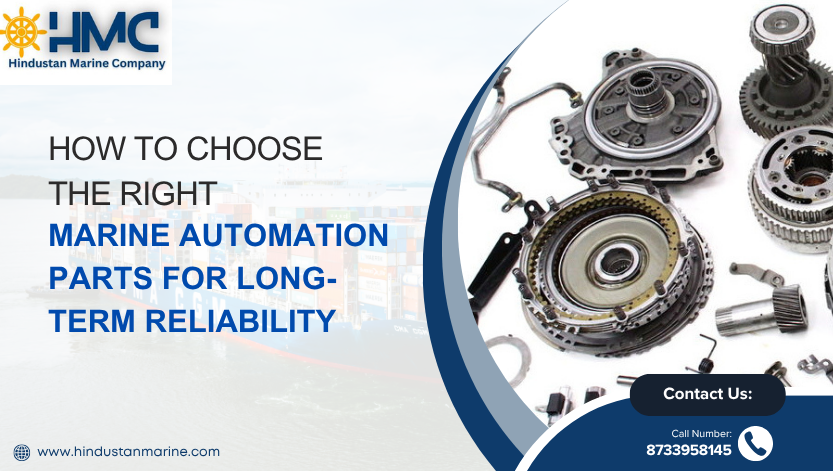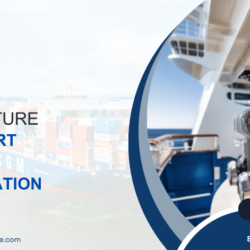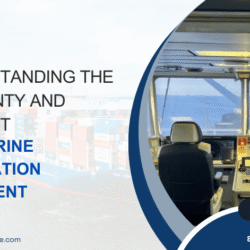
How to Choose the Right Marine Automation Parts for Long-Term Reliability
In today’s maritime industry, automation goes beyond luxury. It is a necessity. From navigation to engine control, fire safety to cargo management, marine automation systems play a huge role in ensuring the vessel’s safety, efficiency as well as being compliant with international regulations.
However, the heart of any automation lies in its components, and when it comes to choosing the right marine automation parts, you need to keep in mind in achieving long-term reliability and operational excellence.
So, how to ensure that you are investing in the most suitable and updated parts that will perform well under the demanding conditions of the marine environment? Let’s have a walk through the essential factors that you need to consider.
Why does marine automation matter?
The modern-day vessels rely on state-of-the-art, sophisticated automation systems. It helps to reduce the manual effort, improve safety and definitely optimise the performances. The systems monitor and control various shift functions, which can include propulsion and engine monitoring, ballast control, HVAC systems, alarm and monitoring systems, fire detection and suppression, power management in the vessel. Given all these roles, a failure in any part of the automation system can lead to a costly downtime. It can even increase fuel consumption, midway of selling and other life threatening emergencies which is why choosing the right marine automation parts has to be more of a technical decision.
Understanding your system requirements
Before purchasing any part, you need to understand and have a clear idea of your vessel’s automation systems design and requirements. Make sure that you can identify the type of vessel and its specific automation needs. Find out the input output needs of the vessel. Check the compatibility with the existing equipment. Find out about the communication protocols such as MODBUS, CAN, Ethernet etc. Buying parts that align with the system specification will reduce integration issues and help in a seamless operation of the vessel.
Prioritize Marine-Grade Certifications
Like every other industrial component, Marin Applications also has certain certifications. The marine environment is harsh, has high humidity, has salt-laden air, can have constant vibrations and will have temperature fluctuations which will certainly damage any substandard part. So when you are looking for marine automation parts, you need to meet the following international marine certifications such as –
- DNV (Det Norske Veritas)
- Bureau Veritas
- CE Marking
- ABS (American Bureau of Shipping)
- LR (Lloyd’s Register)
- IEC 60945 standard (for maritime navigation and communication equipment)
Choose reputable brands and suppliers
When it comes to quality automation, reputation matters a lot. You have to opt for the parts from manufacturers which are known for their marine expertise. Reputable brands invest in proper research and development, maintain the quality standards, and provide better support and warranties. Your supplier also plays a very important role in this. Once you have a trustworthy supplier, they will not only provide the genuine parts but will also offer technical guidance, fast delivery and an after sales support which is very important in the marine automation.
Focus on durability and corrosion resistance
Given the corrosive nature of the marine environment, you must keep in mind that the marine automation part you are acquiring should be built to last. When evaluating the components, make sure that the material you are choosing is corrosion resistant, such as stainless steel, marine grid plastics, and coated metals. You also need to ensure that the components have a high IP rating, like IP65 or higher, because it helps to protect them against dust and moisture. The components should be designed in a way that it can withstand the ship vibration without losing on its performance. Reliable components will help to reduce maintenance frequency and will not have any sudden breakdowns at sea.
Power efficiency and integration
Now that you have the right paths, another important thing that you need to keep in mind is energy management. Because on the sea it is something that is very tightly monitored. Your automation parts should consume low power without compromising on the performances. They should be compatible with the energy saving features and should be easily integrated into a centralized monitoring system. The modular designs and plug and play compatibility also help to speed up the installation and can also work perfectly when it comes to future upgrades.
Opt for scalable and future-ready solutions
The marine industry is evolving; therefore, with a growing emphasis on digitalization, smart ship technologies and even remote monitoring, you have to future-proof your investments by choosing the right automation parts. One of the significant things that you need to keep in mind is that they should be easily upgradable via software. They should be IoT compatible. Last but not least, it should be designed to integrate with data analytics and ship management platforms.
Availability of spares and Technical Support
Even the best parts may need some repair and replacement over time, so make sure that the components you’re choosing should have readily available spare parts and should have a global service network because your ship will be travelling all across the globe through a network which is not close to your local dealer.
Marine automation is the backbone of modern maritime operations. Therefore, whether you are managing a cargo vessel, a cruise liner or an offshore rig, while selecting the marine automation part, you have to ensure reliability, safety and efficiency. By making informed choices, you are not just protect your investment but also safeguard your crew, cargo and integrity of your operations.





 Fast Delivery
Fast Delivery Easy Returns
Easy Returns Instant Quote
Instant Quote Product Demo
Product Demo